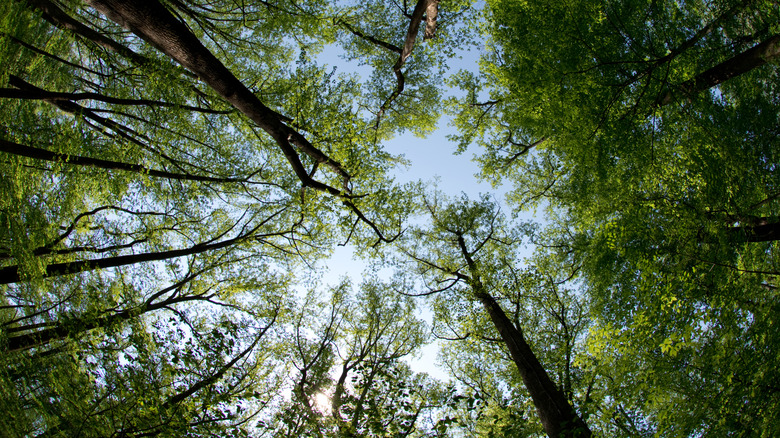Trees are of monumental importance to not only the environment, but human life as a whole. Trees are silent heroes — they provide oxygen that humans need to breathe and also protect our homes from soil erosion. Trees offer shade on those unbearably sunny days, and of course, there are few better childhood memories than climbing up the big oak in your parent’s backyard. Ultimately, trees are essential, and they need to be protected at all costs. Not only do humans need trees, though — so does wildlife. According to the United Nations, more than 80% of Earth’s wildlife lives in forests, with many species specifically hosted in trees. Trees provide shelter and sustenance for many species by way of their leaves and fruit.
If you have strolled around your local park or nature reserve lately, then you may have noticed unusual painted markings on them. These markings can come in the form of different shapes and various colors. Local authorities, environmental advocates, and landowners often mark trees to symbolize things such as impending removal, property delineation, and so much more.
Amongst the most noticeable tree markings are white-painted circles. These symbols are meant to show that the tree houses an endangered species of some sort.
White circles mean the tree is a home

First, to be clear, there is no uniform or universal coding system for tree markings, so different forests may have different rules. However, as previously stated, the general practice for white circles painted onto trees is to caution others that the tree houses an endangered insect or animal species, so that’s the assumption one should make if they see such a marking. One particular animal that this white circle designation is used for is the red-cockaded woodpecker.
Trees serve as shelter for a wide array of animals and insects: Birds build nests in tree branches, squirrels live in trees, and many insects host upon trees as well, both for shelter and to feed upon them. And when an endangered animal decides to make a specific tree into its home, the act of marking the bark helps to protect both the tree and the animal. Such markings are extremely important, as the removal of these species’ host trees can lead to the extinction of the species in question.
Protecting endangered species
There’s no understating the necessity of caring for endangered plants and animals. Biodiversity, or the existence of a large, diverse array of biological organisms, is pivotal to the functionality of our environment. Every species serves a purpose and has a role in our environment, and all species are inherently interconnected and dependent upon one another in some capacity, so if any species is to become endangered or go extinct, then a chain reaction of endangerment and extinction can occur, running the risk of disrupting the ecosystem and throwing it out of balance. Even the smallest losses can have a massive ripple effect.
Ultimately, the protection of wildlife is essential to the protection of the environment as a whole. The survival and sustenance of wildlife is necessary to the survival and sustenance of humanity. So, let’s make sure that Earth’s wildlife is respected and protected — and, of course, that starts with protecting trees!